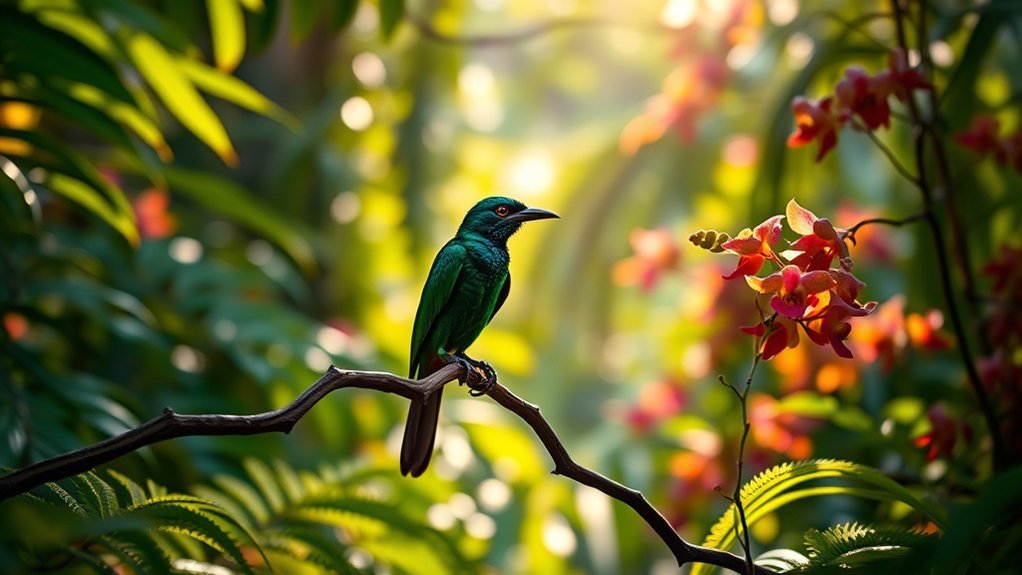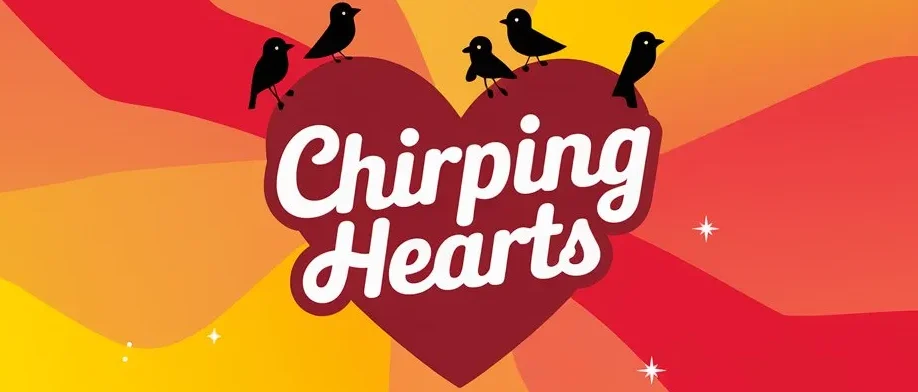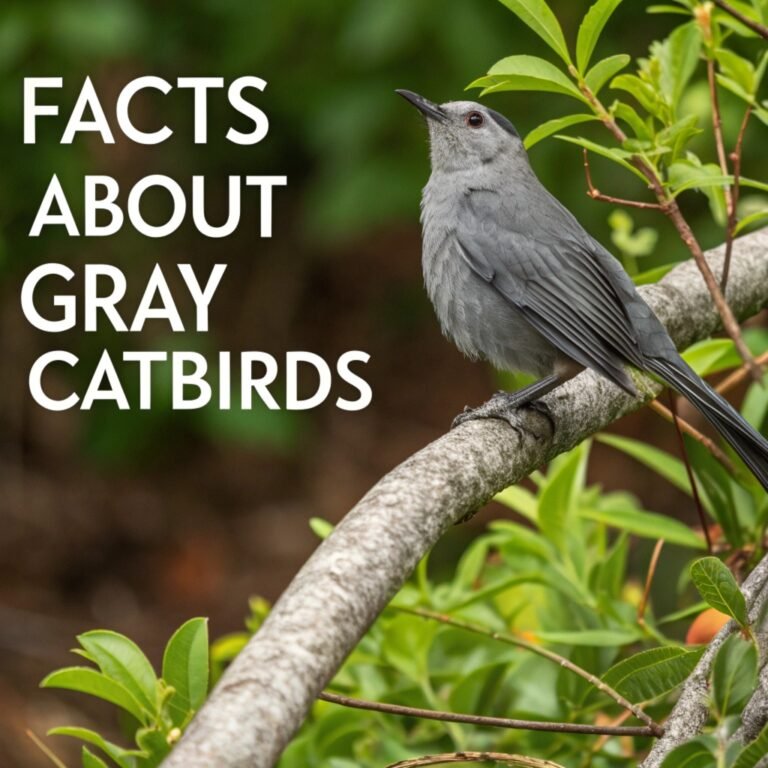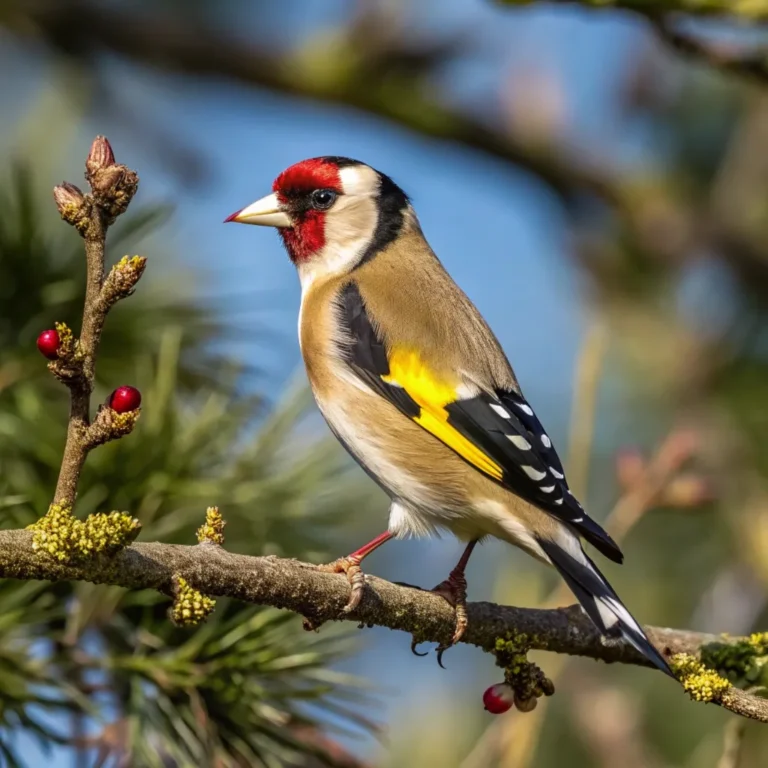Dark Green Birds: Identifying Unique Species in Nature
Dark green birds are important for their habitats. They help keep nature balanced. Birds like the Green Jay and the Black-throated Green Warbler can be tricky to spot. Observing them closely can help you learn more about them.
These birds like different places to live and eat. Knowing where to find them and what they like to eat can make birdwatching more fun. It's also good to think about the dangers these birds face, like losing homes and food sources. Understanding these threats can help you appreciate their role in nature even more. Happy birdwatching!
A Quick Overview
Dark green birds, like the Green Jay and Black-throated Green Warbler, stand out because of their vibrant colors and special calls. These features help birdwatchers tell them apart easily.
To spot dark green birds, use binoculars. Look in places where there is food and water. These areas usually attract birds.
Learn to recognize their feather patterns and behaviors. This knowledge will help you identify them while enjoying birdwatching.
You can also use mobile apps like Merlin Bird ID. These apps help you find out which birds are which by letting you take photos or listen to their calls.
Join local birdwatching groups. You can share tips and stories with others who love spotting birds. This will make your birdwatching experiences even better!
Understanding the Importance of Dark Green Birds in Ecosystems

Dark green birds are important for keeping nature in balance. They help their homes in many ways. When they search for food, they spread seeds. This helps plants grow and stay diverse.
They also eat insects, which keeps bug numbers down and helps control pests naturally.
These birds can show us how healthy the environment is. They reflect the well-being of their habitats. Learning about dark green birds helps us understand the value of nature and its different parts.
When you see these vibrant creatures, remember they play a big role in the ecosystem. They help create healthy places for all living things, including us.
Key Characteristics of Dark Green Birds

Dark green birds play important roles in our ecosystems. They've special features that help them survive and thrive.
- Color: These birds come in different shades of dark green. Their colors can even look shiny when the light hits them just right.
- Feathers: Their feathers are arranged in unique patterns. This helps them hide from animals that might want to eat them.
- Size and Shape: Most dark green birds are small and have smooth bodies. This helps them move easily through thick trees and bushes.
- Sounds: They make special calls. These sounds help them communicate with others, especially during mating or when protecting their homes.
Learning about these characteristics helps us see why dark green birds matter in nature.
It also helps bird lovers and conservationists appreciate them even more.
Techniques for Spotting Dark Green Birds in the Wild

Spotting dark green birds in the wild can be a fun challenge! These birds are good at hiding because they blend in with leaves and trees. Here are some easy tips to help you find them.
First, move slowly and quietly. Quick movements can scare the birds away. Try to stand near places they like to eat or drink, like fruit trees or ponds. Dark green birds often visit these spots.
Next, use your eyes carefully. Look closely at the branches and leaves. Sometimes, you might see a small change in color or a little movement. You can also use binoculars to see better. They help you notice the beautiful patterns on the birds' feathers.
Additionally, be patient. Dark green birds sometimes sit still for a long time. If you wait quietly, you might see one come out.
Finally, talk to other birdwatchers. Sharing your finds and tips can make birdwatching more fun. It's great to learn from each other and enjoy the experience together.
Happy birdwatching!
Notable Species of Dark Green Birds to Observe
Many dark green birds have special traits that make them fun to watch in their homes.
Using simple techniques can help you see these amazing birds more easily. Here are some dark green birds you might want to spot:
- Green Jay: These birds have bright colors and love to hang out in groups.
- Black-throated Green Warbler: Listen for their unique songs; they help you tell them apart from other birds.
- Emerald Doves: Their soft green colors help them blend into the forests.
- Crested Guan: This bird stands out because of its large size and unique crest on its head.
Keep your eyes and ears open, and enjoy birdwatching!
Habitat Preferences of Dark Green Birds
When watching dark green birds, knowing where they like to live can make your birdwatching more fun. These birds love to stay in thick, green places like tropical forests, wetlands, and jungles. They often choose spots with lots of plants, which help them hide and keep safe while they nest.
Dark green birds like to eat fruits, nectar, and insects. You can find these foods in their colorful homes. If you look for the right plants, you'll spot more of these birds. When you find them in their natural places, you can see how they enjoy their food and surroundings.
Getting to know where dark green birds live helps you watch them better. It also helps you appreciate these amazing birds more. So, when you go out, keep an eye out for them in their lush habitats!
Unique Adaptations and Behaviors of Dark Green Birds
Dark green birds have special skills that help them survive in their homes.
Let's look at some of their cool tricks:
- Mimicking sounds: These birds can copy the calls of other animals. This helps them trick predators or attract friends.
- Eating techniques: Their beaks are shaped to get nectar or seeds from specific plants. This food is very important for their diets.
- Blending in: Their dark green feathers help them hide in the leaves. This keeps them safe from dangers.
- Working together: Many dark green birds hunt for food in groups. They share tips about where to find good food.
These skills show how these birds fit into their environment and how they're strong and adaptable.
They've learned to live in their habitats in smart ways, making them unique and interesting creatures.
The Role of Dark Green Birds in Seed Dispersal
Dark green birds are very important for nature. They help plants grow by spreading seeds. When these birds eat fruits, they swallow the seeds and then fly around. Later, they drop these seeds in their droppings. This helps new plants grow in different places.
Having many dark green birds around makes nature healthier. These birds help create different types of plants.
When dark green birds are doing well, it means that many plants and animals can live together happily. This shows how everything in nature is connected and works together.
Threats Facing Dark Green Bird Populations
Dark green birds face many dangers that threaten their survival. Habitat loss is a big problem caused by things like city building and farming. These birds need places to find food, make nests, and raise their young.
Here are some of the key threats they face:
- Loss of foraging habitats means they can't find enough food.
- Nest site destruction happens when trees are cut down, making it hard for them to raise their chicks.
- Climate change changes where and when these birds migrate.
- Urban encroachment leads to more interactions with humans and increased risks from predators.
If we don't act now, dark green bird populations could disappear forever. It's important to understand these issues so we can work together to protect them.
You can help by joining conversations about how to conserve these amazing birds and improve their future. Your voice matters!
Tips for Photographing Dark Green Birds
To photograph dark green birds, you need skill and patience.
First, get some good photography gear. A telephoto lens is great because it lets you take clear pictures from a distance without bothering the birds.
Watch the birds closely to learn how they act. This can help you know when to take your shot. Natural light is your friend too! The morning and late afternoon light is soft and warm, which can make the birds look even more beautiful.
Think about what's behind the birds. A bright background can help the dark green colors stand out.
Try taking many pictures in a row. This way, you have a better chance of catching the perfect moment.
With practice and the right tools, you can enjoy photographing these beautiful birds. It's a rewarding activity that connects you to nature!
Resources for Birdwatching and Conservation Efforts
If you love birdwatching, there are many helpful resources to make your experience better and support bird conservation. Learning about these tools can help you enjoy and appreciate different kinds of birds, especially dark green birds.
- Field Guides: These are books that show pictures of birds and help you learn the names of different species and where they live.
- Mobile Apps: Apps like Merlin Bird ID let you snap a photo of a bird, and they can tell you what it's and even play their calls.
- Conservation Organizations: Groups like the Audubon Society offer resources to help you protect birds and their homes.
- Local Workshops: Join workshops or guided walks to meet other bird lovers and learn more about taking care of birds.
These resources can help you enjoy birdwatching more while also helping to keep birds safe. Happy birdwatching!
Frequently Asked Questions
What Is the Origin of the Color Dark Green in Bird Feathers?
The dark green color in bird feathers comes from two things: pigments and the feather structure. First, pigments are tiny molecules that give color to things. In this case, some birds have special pigments that make their feathers look dark green.
Second, the feather structure also plays a big part. The way light hits the feathers can change how we see the color. This is called structural coloration. Together, pigments and structure create the shiny, beautiful dark green that we see on some birds.
Are There Any Cultural Beliefs Associated With Dark Green Birds?
Many cultures see green feathers as symbols of growth and new beginnings. Dark green birds often carry special meanings. People believe these birds can be messengers or omens. They remind us how connected we are to nature. This connection shows why protecting the environment is important in many spiritual beliefs. So, if you spot a dark green bird, think of it as a reminder of renewal and the beauty of nature.
How Can Dark Green Birds Be Distinguished From Similarly Colored Species?
To tell dark green birds apart from other similar birds, look closely at their colors and how they act. Check their feathers for different patterns. Notice how they behave with other birds. These things can help you figure out which bird is which.
If you watch them closely, you might see some surprises. Some dark green birds have special shades that set them apart. Others might have unique ways of moving or calling. All of these details can help you know more about the bird you're looking at.
Do Dark Green Birds Have Any Significance in Folklore or Mythology?
Dark green birds carry special meanings in many cultures. They often stand for renewal, balance, and good fortune.
In some stories, dark green birds appear as symbols of hope and new beginnings. People see them as reminders to stay positive during tough times.
These birds can also represent nature and harmony. Many believe they help connect us to the earth and its beauty.
What Conservation Organizations Focus Specifically on Dark Green Bird Species?
If you love birds, you might want to check out groups like the Audubon Society and BirdLife International. These organizations work hard to help dark green bird species. They focus on protecting habitats. This means they make sure these birds have safe places to live. Keeping nature healthy is important for these unique birds to thrive. Supporting these groups is a great way to help our feathered friends!

Joyce is the passionate founder of Chirping Hearts, a website dedicated to sharing her love for birds and providing valuable information about avian life. With a background in ornithology and years of experience in birdwatching, Joyce aims to inspire others to appreciate the beauty and diversity of birds. Through her engaging articles and guides, she hopes to foster a community of bird enthusiasts who share her enthusiasm for these incredible creatures. When she’s not writing, Joyce enjoys exploring nature trails and observing birds in their natural habitats.







